Logitech 2014 Annual Report Download - page 252
Download and view the complete annual report
Please find page 252 of the 2014 Logitech annual report below. You can navigate through the pages in the report by either clicking on the pages listed below, or by using the keyword search tool below to find specific information within the annual report.-
 1
1 -
 2
2 -
 3
3 -
 4
4 -
 5
5 -
 6
6 -
 7
7 -
 8
8 -
 9
9 -
 10
10 -
 11
11 -
 12
12 -
 13
13 -
 14
14 -
 15
15 -
 16
16 -
 17
17 -
 18
18 -
 19
19 -
 20
20 -
 21
21 -
 22
22 -
 23
23 -
 24
24 -
 25
25 -
 26
26 -
 27
27 -
 28
28 -
 29
29 -
 30
30 -
 31
31 -
 32
32 -
 33
33 -
 34
34 -
 35
35 -
 36
36 -
 37
37 -
 38
38 -
 39
39 -
 40
40 -
 41
41 -
 42
42 -
 43
43 -
 44
44 -
 45
45 -
 46
46 -
 47
47 -
 48
48 -
 49
49 -
 50
50 -
 51
51 -
 52
52 -
 53
53 -
 54
54 -
 55
55 -
 56
56 -
 57
57 -
 58
58 -
 59
59 -
 60
60 -
 61
61 -
 62
62 -
 63
63 -
 64
64 -
 65
65 -
 66
66 -
 67
67 -
 68
68 -
 69
69 -
 70
70 -
 71
71 -
 72
72 -
 73
73 -
 74
74 -
 75
75 -
 76
76 -
 77
77 -
 78
78 -
 79
79 -
 80
80 -
 81
81 -
 82
82 -
 83
83 -
 84
84 -
 85
85 -
 86
86 -
 87
87 -
 88
88 -
 89
89 -
 90
90 -
 91
91 -
 92
92 -
 93
93 -
 94
94 -
 95
95 -
 96
96 -
 97
97 -
 98
98 -
 99
99 -
 100
100 -
 101
101 -
 102
102 -
 103
103 -
 104
104 -
 105
105 -
 106
106 -
 107
107 -
 108
108 -
 109
109 -
 110
110 -
 111
111 -
 112
112 -
 113
113 -
 114
114 -
 115
115 -
 116
116 -
 117
117 -
 118
118 -
 119
119 -
 120
120 -
 121
121 -
 122
122 -
 123
123 -
 124
124 -
 125
125 -
 126
126 -
 127
127 -
 128
128 -
 129
129 -
 130
130 -
 131
131 -
 132
132 -
 133
133 -
 134
134 -
 135
135 -
 136
136 -
 137
137 -
 138
138 -
 139
139 -
 140
140 -
 141
141 -
 142
142 -
 143
143 -
 144
144 -
 145
145 -
 146
146 -
 147
147 -
 148
148 -
 149
149 -
 150
150 -
 151
151 -
 152
152 -
 153
153 -
 154
154 -
 155
155 -
 156
156 -
 157
157 -
 158
158 -
 159
159 -
 160
160 -
 161
161 -
 162
162 -
 163
163 -
 164
164 -
 165
165 -
 166
166 -
 167
167 -
 168
168 -
 169
169 -
 170
170 -
 171
171 -
 172
172 -
 173
173 -
 174
174 -
 175
175 -
 176
176 -
 177
177 -
 178
178 -
 179
179 -
 180
180 -
 181
181 -
 182
182 -
 183
183 -
 184
184 -
 185
185 -
 186
186 -
 187
187 -
 188
188 -
 189
189 -
 190
190 -
 191
191 -
 192
192 -
 193
193 -
 194
194 -
 195
195 -
 196
196 -
 197
197 -
 198
198 -
 199
199 -
 200
200 -
 201
201 -
 202
202 -
 203
203 -
 204
204 -
 205
205 -
 206
206 -
 207
207 -
 208
208 -
 209
209 -
 210
210 -
 211
211 -
 212
212 -
 213
213 -
 214
214 -
 215
215 -
 216
216 -
 217
217 -
 218
218 -
 219
219 -
 220
220 -
 221
221 -
 222
222 -
 223
223 -
 224
224 -
 225
225 -
 226
226 -
 227
227 -
 228
228 -
 229
229 -
 230
230 -
 231
231 -
 232
232 -
 233
233 -
 234
234 -
 235
235 -
 236
236 -
 237
237 -
 238
238 -
 239
239 -
 240
240 -
 241
241 -
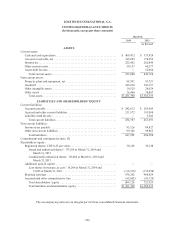 242
242 -
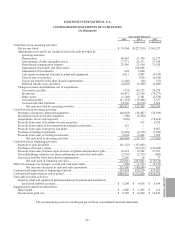 243
243 -
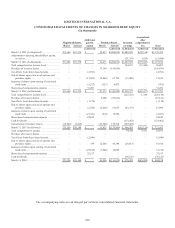 244
244 -
 245
245 -
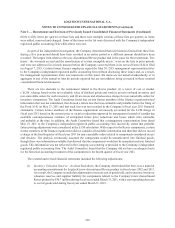 246
246 -
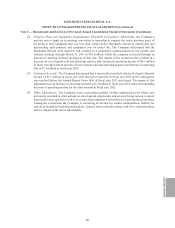 247
247 -
 248
248 -
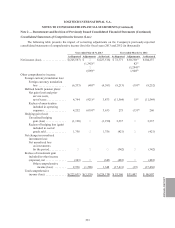 249
249 -
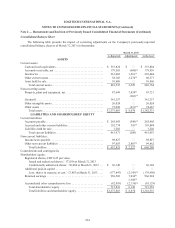 250
250 -
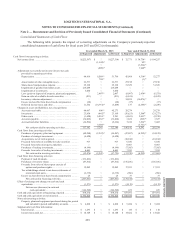 251
251 -
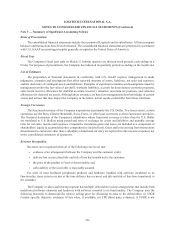 252
252 -
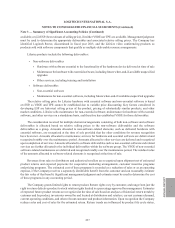 253
253 -
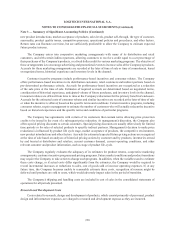 254
254 -
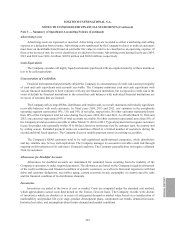 255
255 -
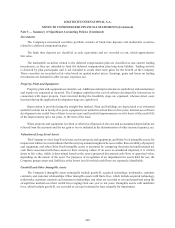 256
256 -
 257
257 -
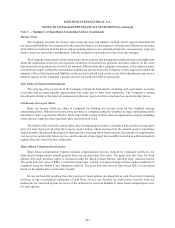 258
258 -
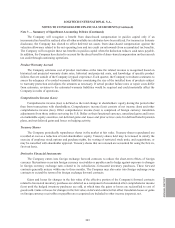 259
259 -
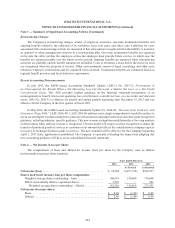 260
260 -
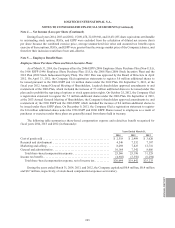 261
261 -
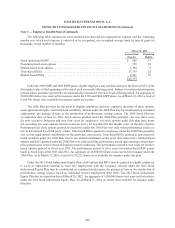 262
262 -
 263
263 -
 264
264 -
 265
265 -
 266
266 -
 267
267 -
 268
268 -
 269
269 -
 270
270 -
 271
271 -
 272
272 -
 273
273 -
 274
274 -
 275
275 -
 276
276 -
 277
277 -
 278
278 -
 279
279 -
 280
280 -
 281
281 -
 282
282 -
 283
283 -
 284
284 -
 285
285 -
 286
286 -
 287
287 -
 288
288 -
 289
289 -
 290
290 -
 291
291 -
 292
292 -
 293
293 -
 294
294 -
 295
295 -
 296
296 -
 297
297 -
 298
298 -
 299
299 -
 300
300 -
 301
301 -
 302
302 -
 303
303 -
 304
304 -
 305
305 -
 306
306 -
 307
307 -
 308
308
 |
 |
LOGITECH INTERNATIONAL S.A.
NOTES TO CONSOLIDATED FINANCIAL STATEMENTS (Continued)
Note 3 — Summary of Significant Accounting Policies
Basis of Presentation
The consolidated financial statements include the accounts of Logitech and its subsidiaries. All intercompany
balances and transactions have been eliminated. The consolidated financial statements are presented in accordance
with U.S. GAAP (accounting principles generally accepted in the United States of America).
Fiscal Year
The Company’s fiscal year ends on March 31. Interim quarters are thirteen-week periods, each ending on a
Friday. For purposes of presentation, the Company has indicated its quarterly periods as ending on the month end.
Use of Estimates
The preparation of financial statements in conformity with U.S. GAAP requires management to make
judgments, estimates and assumptions that affect reported amounts of assets, liabilities, net sales and expenses,
and the disclosure of contingent assets and liabilities. Examples of significant estimates and assumptions made by
management involve the fair value of goodwill, warranty liabilities, accruals for discretionary customer programs,
sales return reserves, allowance for doubtful accounts, inventory valuation, uncertain tax positions, and valuation
allowances for deferred tax assets. Although these estimates are based on management’s best knowledge of current
events and actions that may impact the Company in the future, actual results could differ from those estimates.
Foreign Currencies
The functional currency of the Company’s operations is primarily the U.S. Dollar. To a lesser extent, certain
operations use the Euro, Chinese Renminbi, Swiss Franc, or other local currencies as their functional currencies.
The financial statements of the Company’s subsidiaries whose functional currency is other than the U.S. Dollar
are translated to U.S. Dollars using period-end rates of exchange for assets and liabilities and monthly average
rates for net sales, income and expenses. Cumulative translation gains and losses are included as a component of
shareholders’ equity in accumulated other comprehensive income/(loss). Gains and losses arising from transactions
denominated in currencies other than a subsidiary’s functional currency are reported in other income (expense), net
in the consolidated statements of operations.
Revenue Recognition
Revenues are recognized when all of the following criteria are met:
• evidence of an arrangement between the Company and the customer exists;
• delivery has occurred and title and risk of loss has transferred to the customer;
• the price of the product is fixed or determinable; and
• collectability of the receivable is reasonably assured.
For sales of most hardware peripherals products and hardware bundled with software incidental to its
functionality, these criteria are met at the time delivery has occurred and title and risk of loss have transferred to
the customer.
The Company’s video conferencing segment has multiple-deliverable revenue arrangements that include both
undelivered software elements and hardware with software essential to its functionality. The Company uses the
following hierarchy to determine the relative selling price for allocating revenue to the deliverables: (i) VSOE
(vendor specific objective evidence) of fair value, if available; (ii) TPE (third party evidence), if VSOE is not
236
